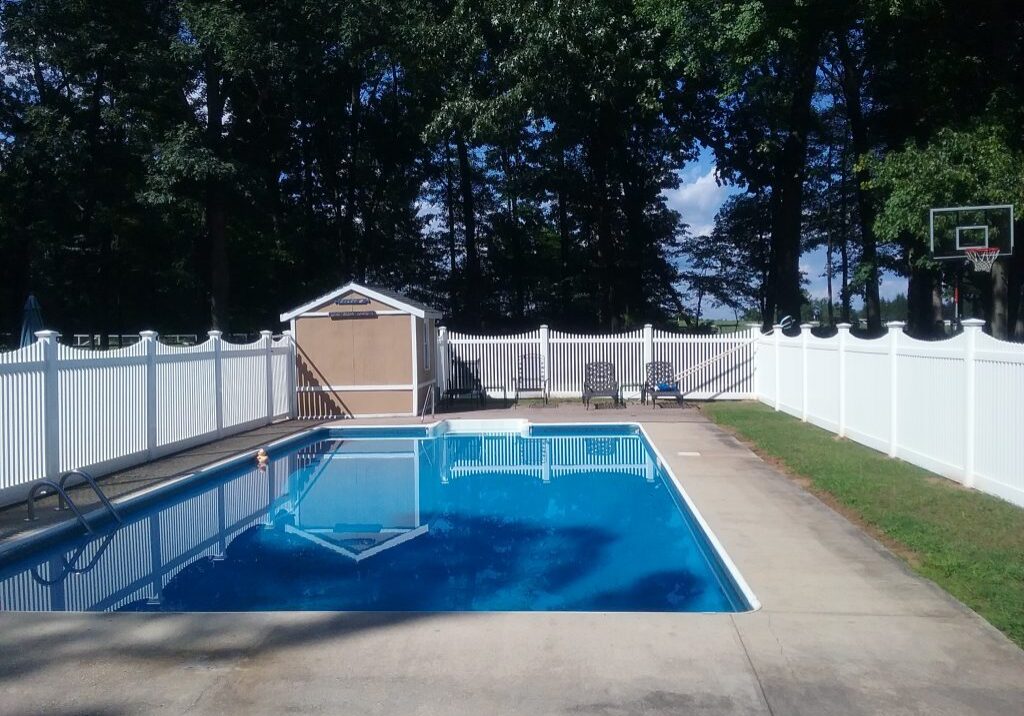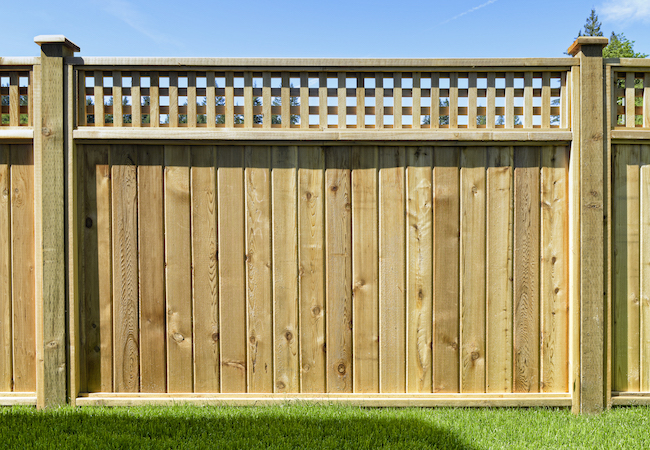Featured
Not just does this secure your fence from the components, but it additionally assists preserve the wood's all-natural appearance. Several homeowners ask yourself: Exactly how typically should I paint or tarnish my wood fencing?
The answer depends upon numerous variables, consisting of the kind of timber, the climate in your area, and whether the fence is tarnished or repainted. Allow's break down the crucial considerations to assist you identify the optimal schedule for paint or tarnishing your wood fencing.
Sunlight Direct Exposure: Surround locations with intense sunlight are much more vulnerable to drying out, fading, and splitting. This means you might need to paint or restain your fence every 2 to 3 years to protect it from UV damages. Rain and Humidity: Surround regions with heavy rainfall or high humidity can take in moisture, triggering the wood to swell, warp, or rot. Discoloration can offer a protective barrier, however you may need to restain every 2 years or so to maintain the timber sealed and secured. Snow and Cold Temperatures: If your fence is in an area with cool wintertimes, cold and thawing cycles can discolor or trigger the paint to peel and fracture. Depending on your climate, you may need to repaint or restain every 3 to 5 years. 2. Kind of Wood. The sort of wood utilized for your fence additionally impacts how often you need to use paint or discolor. Various woods react in different ways to dampness and sunlight, so the upkeep routine can differ.
![]()
Cedar and Redwood: These naturally durable timbers withstand rot and insect damage, yet they can fade in time because of sunlight exposure. If you desire to maintain the timber's rich color, you may need to discolor or secure it every 2 to 3 years. Pine and Fir: Softwoods like yearn and fir are a lot more vulnerable to weathering, and they have a tendency to absorb dampness quicker. Consequently, you may require to discolor or paint these woods extra often, maybe every 1 to 2 years, to safeguard against water damage and staining. Pressure-Treated Wood: Pressure-treated wood is designed to resist rot and pest damage. However, it still needs sealing to avoid dampness absorption. Depending on direct exposure, a good stain or sealant might require to be reapplied every 2 to 3 years. 3. Paint vs. Discolor. Whether you paint or discolor your fencing can likewise affect exactly how commonly it needs maintenance.
Paint: Paint supplies a thicker, much more opaque layer of defense, blocking UV rays and wetness. Paint can chip, peel, and fracture over time, especially in areas with extreme climate conditions. Commonly, repainted fencings need to be repainted every 3 to 5 years, yet this can vary relying on exposure to the elements. Stain: Stain passes through the timber, offering a much more natural look while using some defense versus the sun and moisture. Stain has a tendency to deteriorate extra swiftly than paint, so you may need to restain your fence extra often-- normally every 2 to 3 years. However, the benefit of stain is that it does not peel off, making it much easier to maintain in time. 4. Signs That It's Time to Restain or paint. Also if you do not have a set schedule, there are several indicators that indicate it's time to paint or restain your fence:
Discoloring or Staining: If your fence has shed its abundant shade and shows up faded or grey, it's time to include a fresh coat of discolor or paint. Fracturing or peeling off: If you see peeling off paint or breaking stain, your fence is no more fully protected, and it's time to repair or begin again. Water Absorption: An easy test can help you determine if your fencing is still appropriately secured. Spray some water on the surface; if it grains up, the repaint or discolor is still doing its job. If the water saturates right into the wood, it's time to reapply. 5. Correct Preparation and Application. When it's time to stain or paint, appropriate prep work is vital for resilient outcomes. Tidy the fence thoroughly to remove mold, dirt, or mold, and repair any type of broken sections before using paint or discolor. For the very best results, choose a completely dry, mild day for application-- avoid paint in extreme heat or moisture, as it can tarnish or cause the paint to completely dry also promptly or erratically.
![]()
Conclusion. In general, you should intend to repaint or discolor your wood fencing every 2 to 3 years, though the specific routine will depend upon your environment, the sort of wood, and whether you have actually painted or tarnished the fencing. Regular maintenance not just assists maintain your fencing looking excellent however additionally expands its life expectancy by securing the timber from wetness, UV rays, and other ecological elements. By staying on top of this task, you'll ensure your fence continues to be both useful and gorgeous for numerous years to find.
The answer depends upon numerous variables, consisting of the kind of timber, the climate in your area, and whether the fence is tarnished or repainted. Allow's break down the crucial considerations to assist you identify the optimal schedule for paint or tarnishing your wood fencing.
- Environment and Weather Condition Issues. The climate in your area plays a significant function in just how commonly your fencing requires maintenance. Fences in areas with harsh climate problems, such as high moisture, hefty rain, or extreme sunlight direct exposure, will certainly require more regular painting or discoloration than those in temperate environments.
Sunlight Direct Exposure: Surround locations with intense sunlight are much more vulnerable to drying out, fading, and splitting. This means you might need to paint or restain your fence every 2 to 3 years to protect it from UV damages. Rain and Humidity: Surround regions with heavy rainfall or high humidity can take in moisture, triggering the wood to swell, warp, or rot. Discoloration can offer a protective barrier, however you may need to restain every 2 years or so to maintain the timber sealed and secured. Snow and Cold Temperatures: If your fence is in an area with cool wintertimes, cold and thawing cycles can discolor or trigger the paint to peel and fracture. Depending on your climate, you may need to repaint or restain every 3 to 5 years. 2. Kind of Wood. The sort of wood utilized for your fence additionally impacts how often you need to use paint or discolor. Various woods react in different ways to dampness and sunlight, so the upkeep routine can differ.

Cedar and Redwood: These naturally durable timbers withstand rot and insect damage, yet they can fade in time because of sunlight exposure. If you desire to maintain the timber's rich color, you may need to discolor or secure it every 2 to 3 years. Pine and Fir: Softwoods like yearn and fir are a lot more vulnerable to weathering, and they have a tendency to absorb dampness quicker. Consequently, you may require to discolor or paint these woods extra often, maybe every 1 to 2 years, to safeguard against water damage and staining. Pressure-Treated Wood: Pressure-treated wood is designed to resist rot and pest damage. However, it still needs sealing to avoid dampness absorption. Depending on direct exposure, a good stain or sealant might require to be reapplied every 2 to 3 years. 3. Paint vs. Discolor. Whether you paint or discolor your fencing can likewise affect exactly how commonly it needs maintenance.
Paint: Paint supplies a thicker, much more opaque layer of defense, blocking UV rays and wetness. Paint can chip, peel, and fracture over time, especially in areas with extreme climate conditions. Commonly, repainted fencings need to be repainted every 3 to 5 years, yet this can vary relying on exposure to the elements. Stain: Stain passes through the timber, offering a much more natural look while using some defense versus the sun and moisture. Stain has a tendency to deteriorate extra swiftly than paint, so you may need to restain your fence extra often-- normally every 2 to 3 years. However, the benefit of stain is that it does not peel off, making it much easier to maintain in time. 4. Signs That It's Time to Restain or paint. Also if you do not have a set schedule, there are several indicators that indicate it's time to paint or restain your fence:
Discoloring or Staining: If your fence has shed its abundant shade and shows up faded or grey, it's time to include a fresh coat of discolor or paint. Fracturing or peeling off: If you see peeling off paint or breaking stain, your fence is no more fully protected, and it's time to repair or begin again. Water Absorption: An easy test can help you determine if your fencing is still appropriately secured. Spray some water on the surface; if it grains up, the repaint or discolor is still doing its job. If the water saturates right into the wood, it's time to reapply. 5. Correct Preparation and Application. When it's time to stain or paint, appropriate prep work is vital for resilient outcomes. Tidy the fence thoroughly to remove mold, dirt, or mold, and repair any type of broken sections before using paint or discolor. For the very best results, choose a completely dry, mild day for application-- avoid paint in extreme heat or moisture, as it can tarnish or cause the paint to completely dry also promptly or erratically.

Conclusion. In general, you should intend to repaint or discolor your wood fencing every 2 to 3 years, though the specific routine will depend upon your environment, the sort of wood, and whether you have actually painted or tarnished the fencing. Regular maintenance not just assists maintain your fencing looking excellent however additionally expands its life expectancy by securing the timber from wetness, UV rays, and other ecological elements. By staying on top of this task, you'll ensure your fence continues to be both useful and gorgeous for numerous years to find.
Latest Posts
The Benefits of Routine Auto Maintenance at Montclare Auto Repair Reduces Costs
Published May 30, 25
1 min read
Explore Oil Changes & More: Complete Services Guide from Montclare Auto Repair
Published May 27, 25
1 min read
Learn About Exceptional Auto Repair Services offered by Montclare Auto Repair – Expert Care for Your Vehicle
Published May 27, 25
1 min read
More
Latest Posts
The Benefits of Routine Auto Maintenance at Montclare Auto Repair Reduces Costs
Published May 30, 25
1 min read
Explore Oil Changes & More: Complete Services Guide from Montclare Auto Repair
Published May 27, 25
1 min read
Learn About Exceptional Auto Repair Services offered by Montclare Auto Repair – Expert Care for Your Vehicle
Published May 27, 25
1 min read